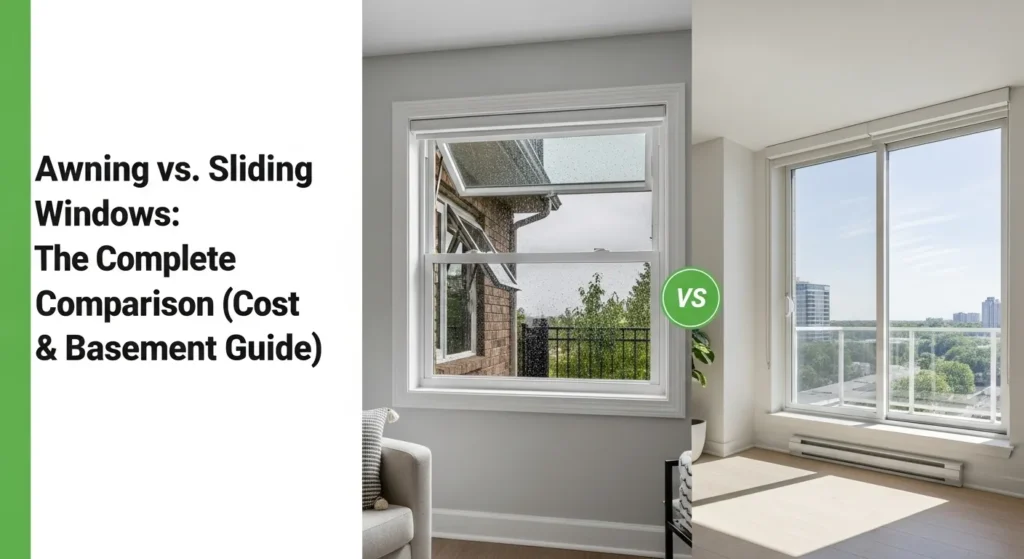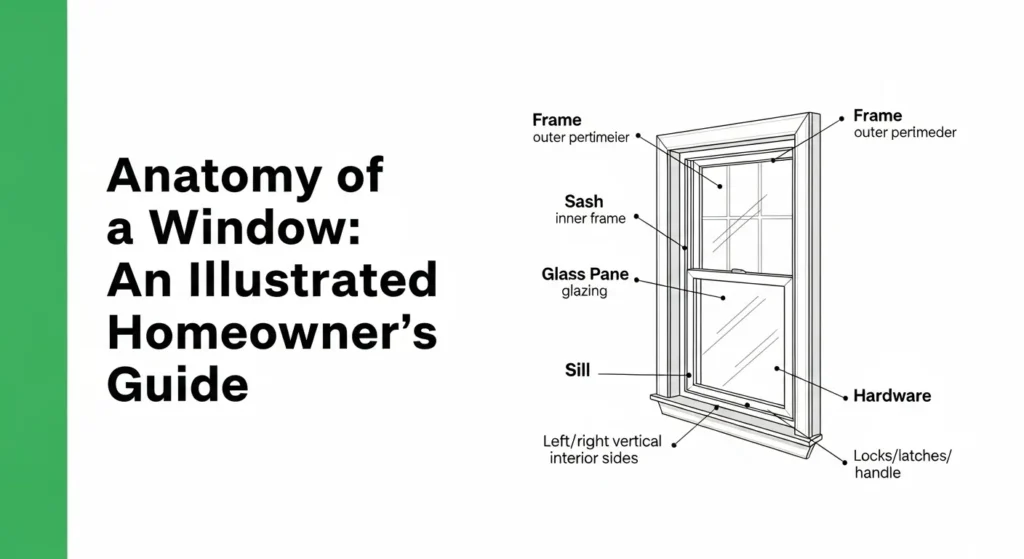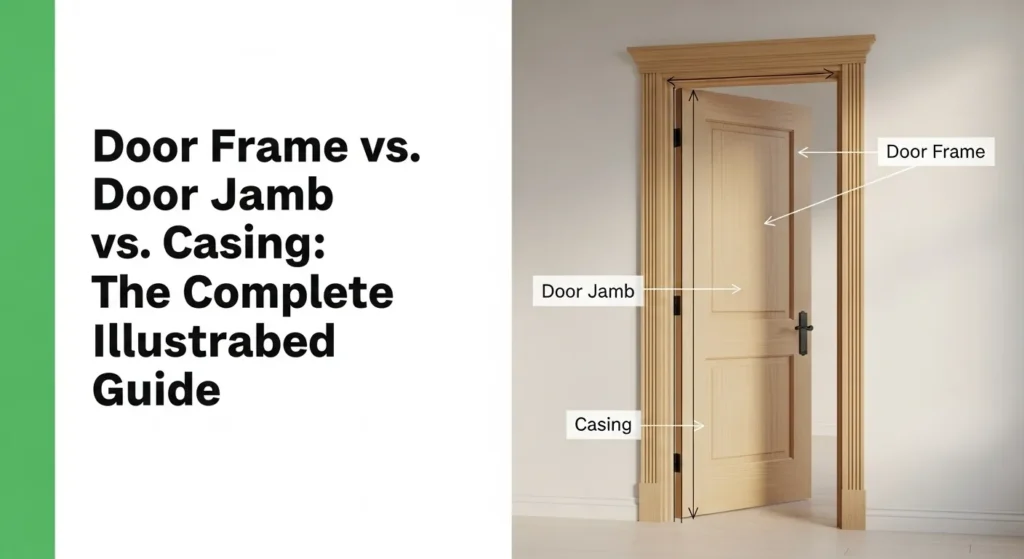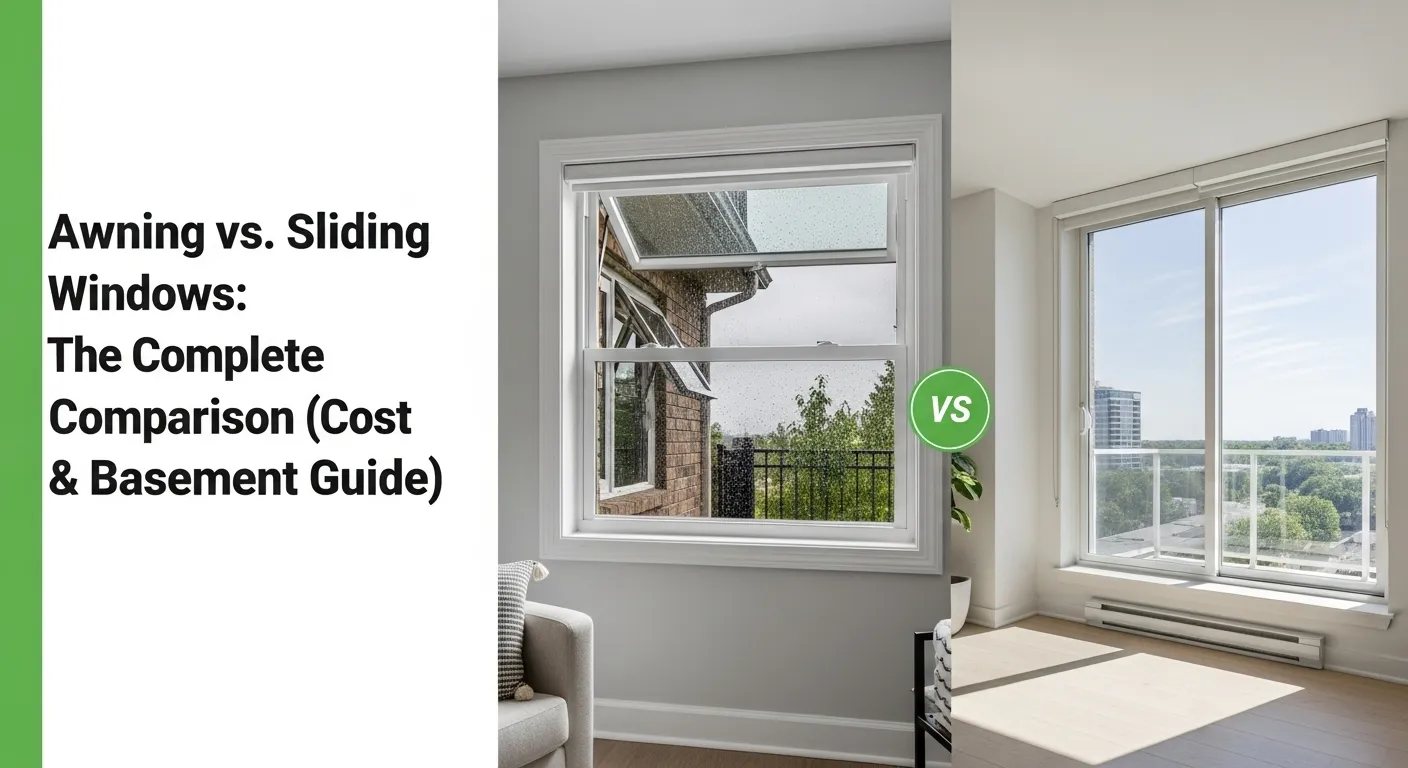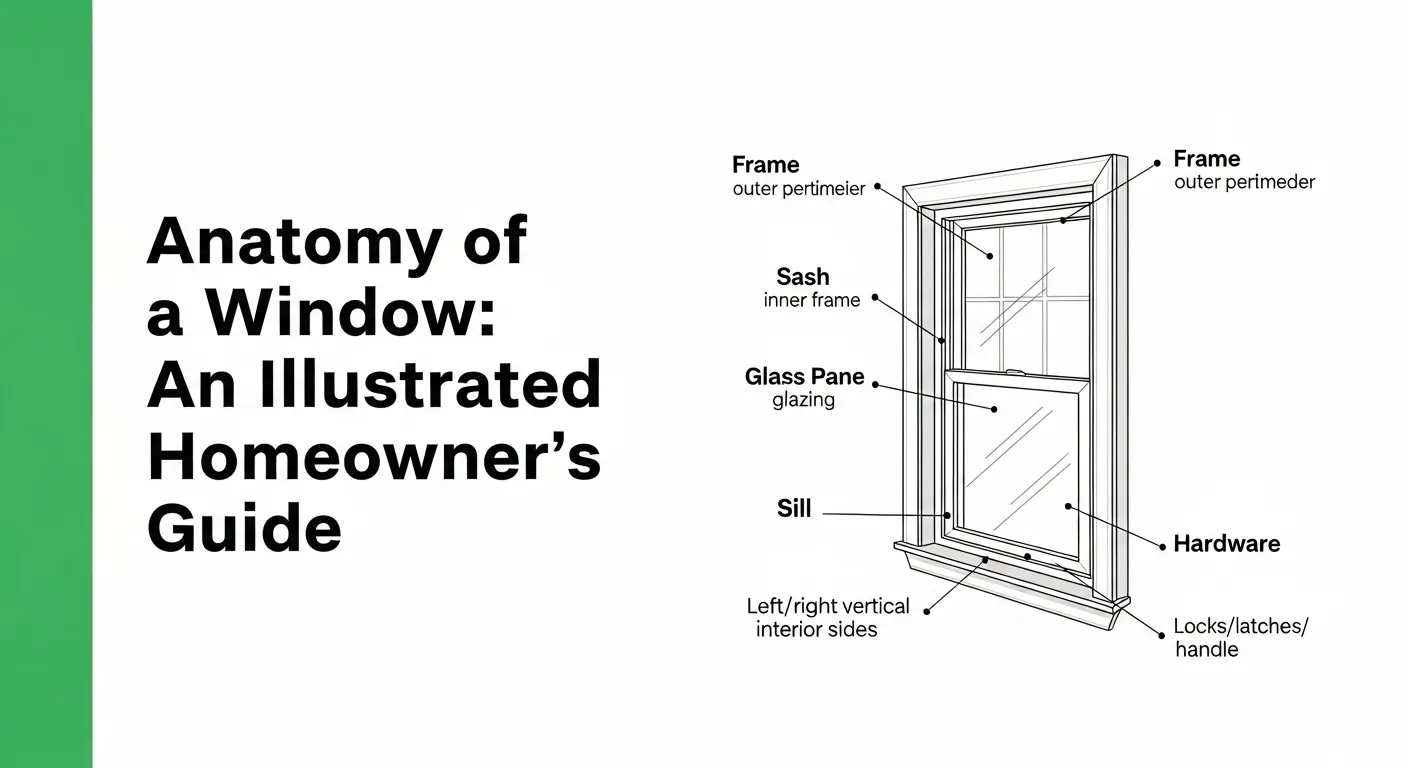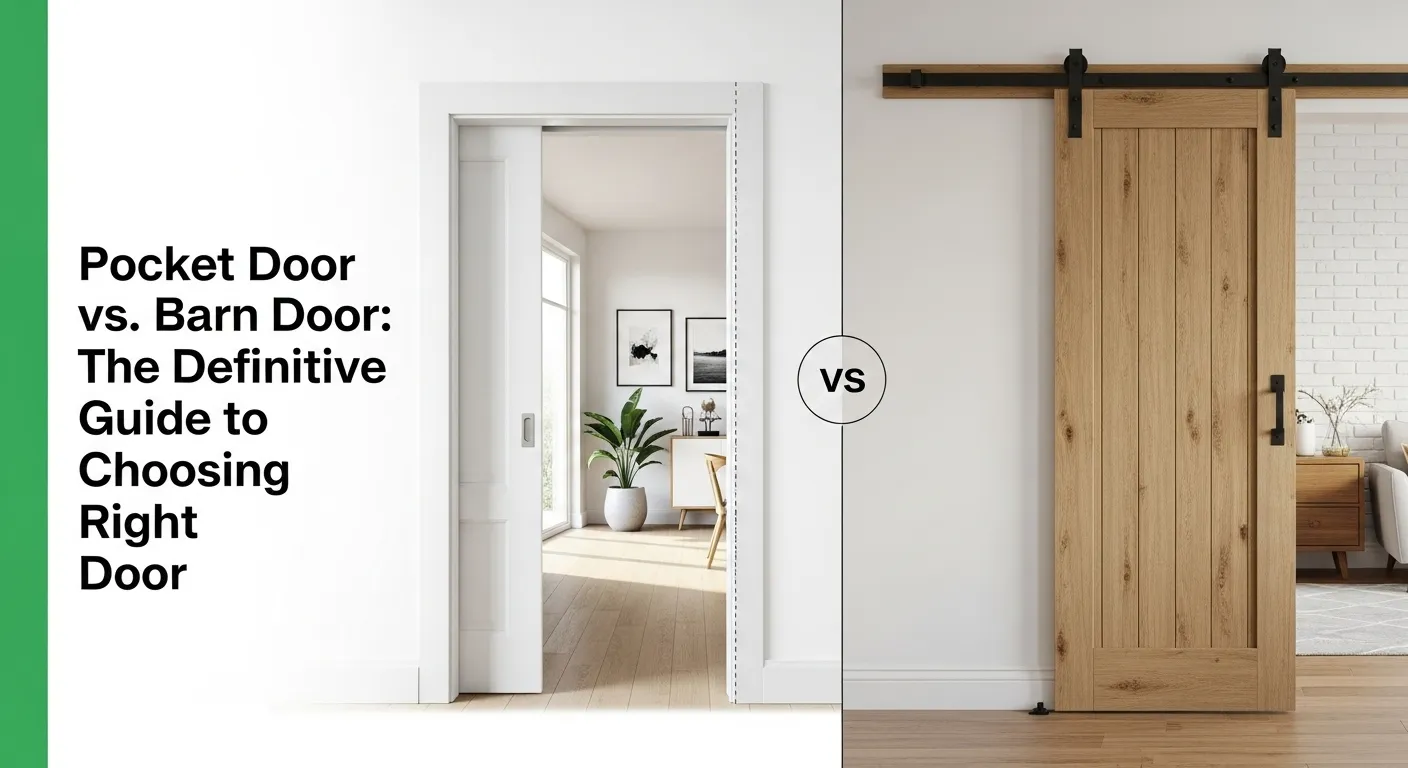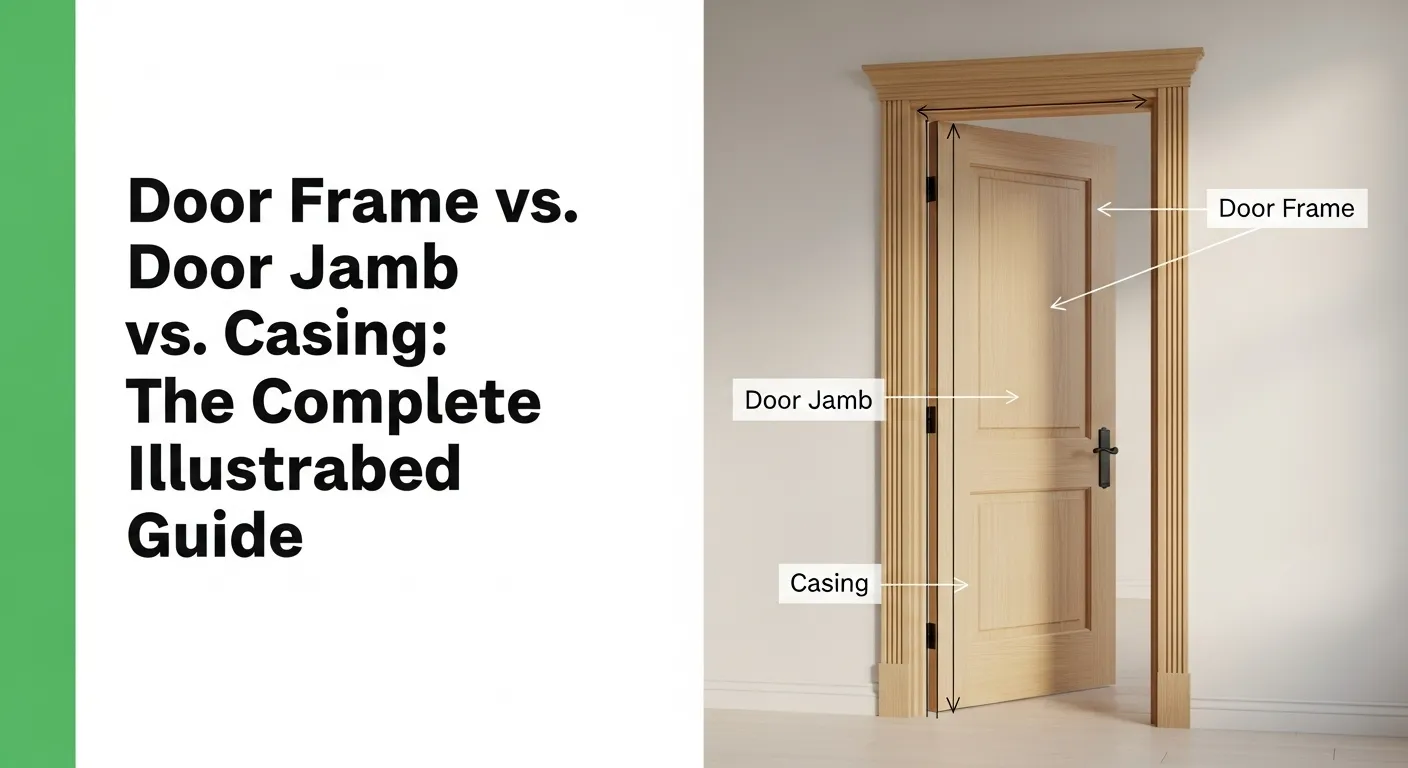Installing J‑channel is the key to a professional siding job—but it’s more than trim. It serves as your window’s primary barrier against water damage.
This guide shows the foolproof, step‑by‑step method pros use, with special focus on the critical corner cuts that guarantee a waterproof, flawless finish.
What Is the “Watershed” Principle, and Why Does It Matter?
Water flows downhill. Every overlap must shed water to the piece below it: top over sides, sides over bottom, and the bottom drains out.

- Top overlaps Sides → Sides overlap Bottom → Bottom drains out and away
- If any overlap is reversed, water will back up and discover its way behind the siding.
Visual note: Include a simple diagram with arrows showing water flowing from the top J‑channel over the sides and from the sides over the bottom, exiting via weep notches.
What Tools and Materials Do You Need to Install J-Channel?
Use accurate layout tools, cut with snips for control, and fasten with corrosion‑resistant, roofing‑style nails.
Essential Tools

- Tape measure
- Speed square
- Tin snips (aviation snips; left/right/straight if available)
- Hammer
- Utility knife (for film, WRB, and minor scoring)
Pro‑Tip: Snips beat a knife for J‑channel. They won’t slip, they make cleaner cuts on vinyl, and they allow precise notching without scoring the visible face.
Materials

- J‑channel (match siding color/profile; 1/2 in to 3/4 in J‑pocket depth is common)
- Siding nails: 1‑1/2 in roofing‑style, hot‑dipped galvanized or stainless (per local code/climate)
- Optional: Slot punch for elongating nail holes in cold weather; small file/deburring tool
Quick nailing reference:
- Nail spacing: every 12–16 in in the center of factory slots
- Leave nail heads 1/16 in proud for thermal movement (do not pinch)
- Start fastening near the center of each piece, then work toward the ends
How Do You Install J-Channel Around a Window? (Step-by-Step)
Install in this order for watershed integrity—Bottom → Sides → Top. Create drip flaps at the headpiece and tuck them inside the side channels.
How Do You Prepare the Opening and Measure Correctly?
- Confirm WRB and window flashing are installed properly: sill flashing first, then jambs, then head flashing with the WRB head flap shingled over it.
- Measure the window frame width and height to the outer edges where J‑channel will sit. Measure twice.
Pro‑Tip: Record measurements and add your overlap allowances before cutting. Dry fit off‑cuts to confirm pocket depth and reveal.
How Do You Install the Bottom J-Channel (Sill)?
Cut to the window width and set it level. Nail loosely so the piece can expand, and plan for drainage.
- Cut the bottom piece to the exact frame width.
- Create weep notches: snip small V‑notches in the face every 6–8 in to promote drainage (don’t notch the back leg).
- Position the J with the pocket facing the window.
- Fasten: Nail through the centers of the slots, starting in the middle and working outward, leaving heads 1/16 in pride.
Pro‑Tip: Ensure the bottom is perfectly level; any tilt may cause water to collect in the pocket.
How Do You Cut and Install the Side J-Channels (Jambs)?
Cut each side 2 inches longer than the height of the frame to allow for overlap at the top. Form a bottom tab that sits inside the sill channel.
- Cut length: side height = frame height + 2 in.
- Bottom tab cut:
- From the bottom end, measure up 1 in.
- Please make a 1-inch cut through the face and bottom lip on both sides, ensuring the back leg remains intact.
- Fold the back flap inward to create a tab that will sit inside the bottom J, directing water into the sill.
- Dry fit: The folded tab should rest neatly inside the bottom channel pocket.
- Fasten: Plumb each side piece and nail through slot centers at 12–16 in spacing, heads 1/16 in proud.

Check: Side faces must sit on top of the bottom channel, with the back flap tab inside the bottom pocket—this is your watershed path.
How Do You Cut the Top J-Channel (Head/Drip Cap) Correctly?
Cut the headpiece to be 2 inches wider than the opening, and create drip flaps that direct water from the head into the sides.
- Cut length: head width = frame width + 2 in.
- Drip edge cuts (critical):
- Mark 1 in from each end.
- At each end, remove the face and bottom lip at a 45° angle, stopping at the 1 in mark; leave the back leg intact.
- In the remaining back leg, make a short vertical slit down about 3/4–1 in to form a flexible “drip flap.”
- Lightly deburr cut edges with a file.
- Test fold: The drip flaps should tuck inside the side channels when installed, shedding water into the side pockets.
Visual note: Create a close‑up diagram and an animated GIF showing the 45° face/bottom removal and the drip flap slit/fold.
How Do You Install the Top J-Channel?
Tuck the drip flaps into the side channels, then fasten the head loosely.
- Dry fit: Set the headpiece so its face overlaps the side faces. Tuck each drip flap neatly inside the side J pocket.
- Confirm overlaps: top over sides; sides over bottom.
- Fasten: Nail through slot centers across the head, leaving 1/16 in for movement.
Final check: see all the reveals. Confirm no reversed overlaps, all flaps tucked inside the side channels, and that the bottom weeps can drain.
How Does J-Channel Integrate with the Water-Resistive Barrier (WRB)?
J‑channel is not a seal; it’s a diverter installed after WRB and flashing. Correct layering ensures any water reaching the channel exits safely.

Recommended layering (exterior to interior cross‑section):
- Siding panel (laps into J‑channel pocket)
- J‑channel (nailed through elongated slots; head overlaps sides)
- Window flashing tape sequence (sill → jambs → head) integrated with WRB
- House wrap (WRB), with head flap lapped over head flashing
- Sheathing and framing
Key point: The J‑channel is the last part of the weather management system. It guides incidental water out; it does not replace flashing or WRB.
Pro Tips and Common Mistakes to Avoid
Build for movement and drainage; don’t seal the channel; maintain watershed overlaps.
- Tip #1: Loose is right
- Nail the fasteners in the center of the slots and leave the heads protruding 1/16 inch to allow for thermal expansion.
- Tip #2: Cold‑weather install
- Below ~4°C (40°F), elongate tight slots with a slot punch and widen end clearances slightly to prevent buckling.
- Tip #3: Drainage assist
- Add discreet V‑weep notches in the bottom J‑channel face to accelerate water exit.
- Mistake #1: Caulking the J‑channel
- J‑channel isn’t a waterproof joint. Using caulk can trap water, which may lead to the rotting of sheathing. Keep drainage paths open.
- Mistake #2: Reversed overlaps at corners
- Never tuck head flaps behind the side channels. Drip flaps go inside the side pockets.
- Mistake #3: Tight nailing
- Pinning the channel prevents movement and leads to buckling and noise.
- Troubleshooting: Can You Use Windex or WD‑40 on pvc Windows?
- Maintenance: Cleaning and Maintaining uPVC Windows
- Painting: How to Paint Exterior Vinyl Windows for a Lasting Finish
- Painting: Can You Paint Vinyl Windows?
- Cost analysis: The Average Cost to Install upvc Windows
- Install: Installing Vinyl Windows in a Brick House
- Maintenance: How to Repair a Cracked pvc Window Frame
- Maintenance: Replacing upvc Window Glass & Parts
- Install: How to Install J‑Channel and Trim Around Windows with Vinyl Siding
Conclusion
The key to success is simple: understand the watershed principle and execute the corner cuts with precision. Start with the bottom, then attach the sides using the bottom tabs, and finally install a properly notched head with the drip flaps tucked inside the sides.
Follow these steps and you’ll get a durable, watertight, professional‑looking installation that sheds water exactly where it should—out and away.

